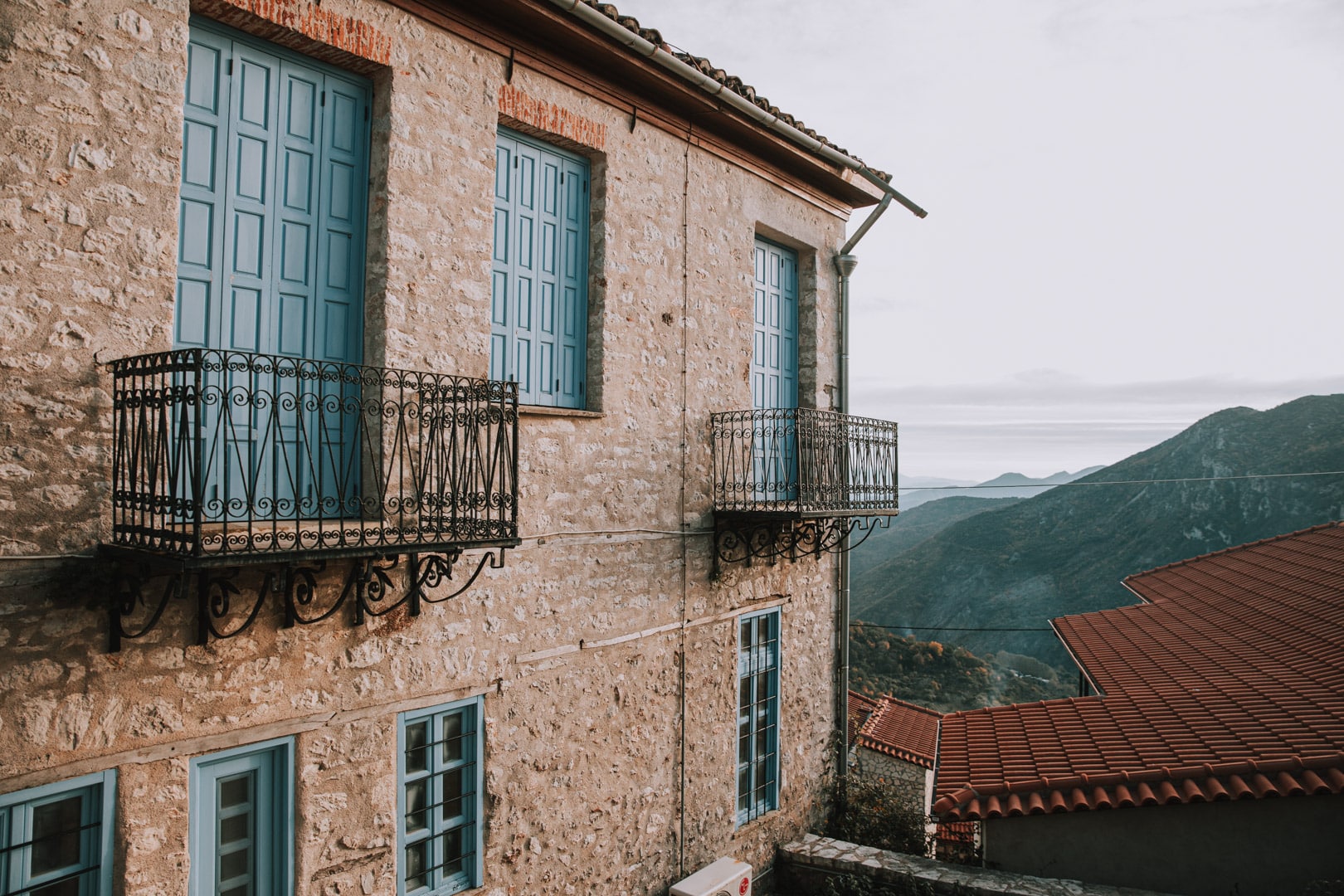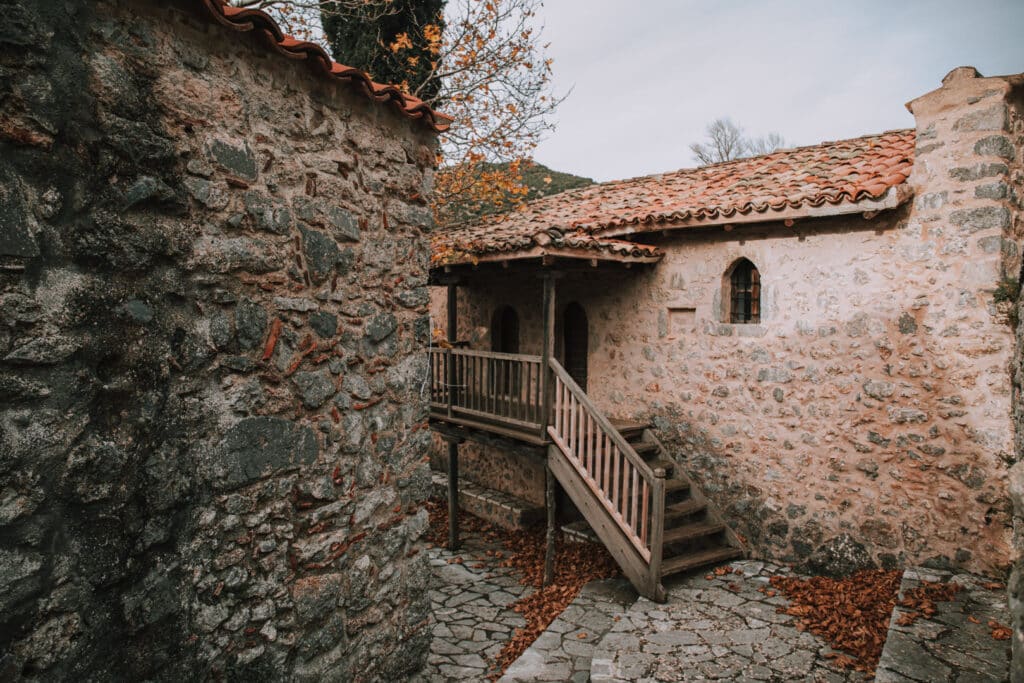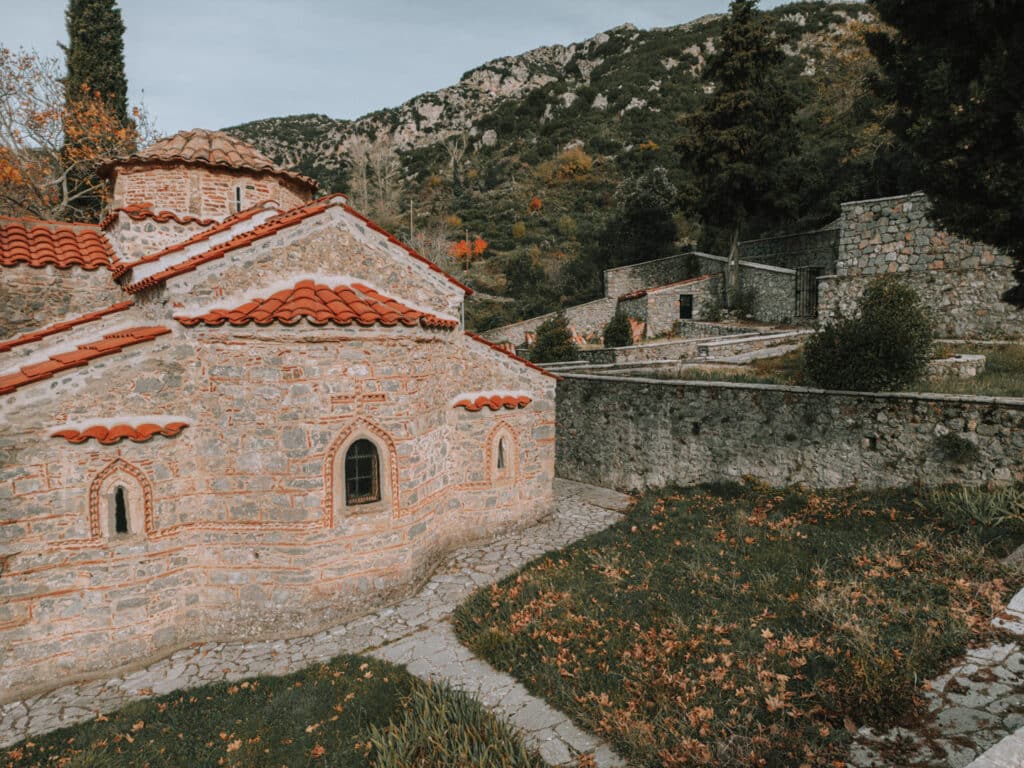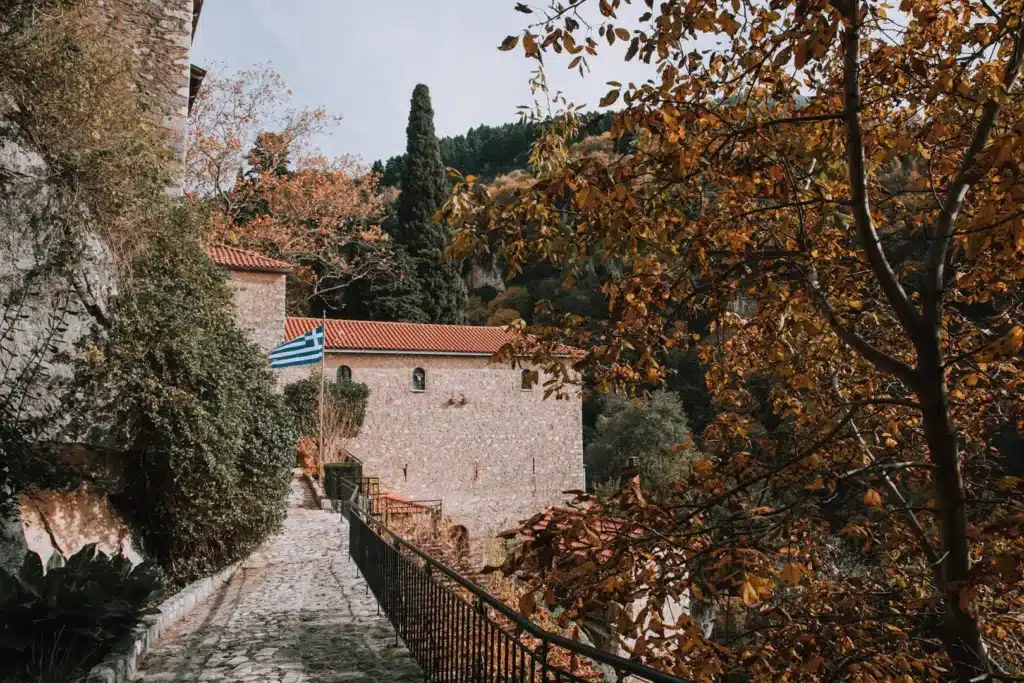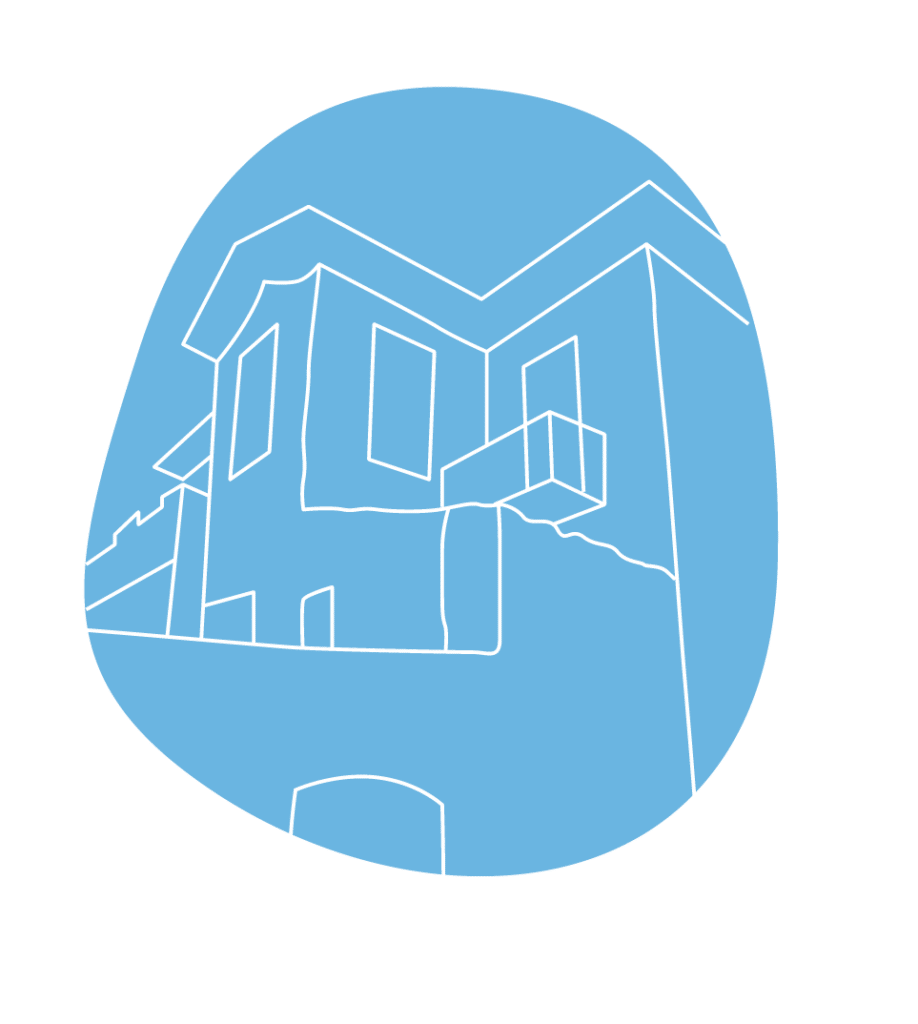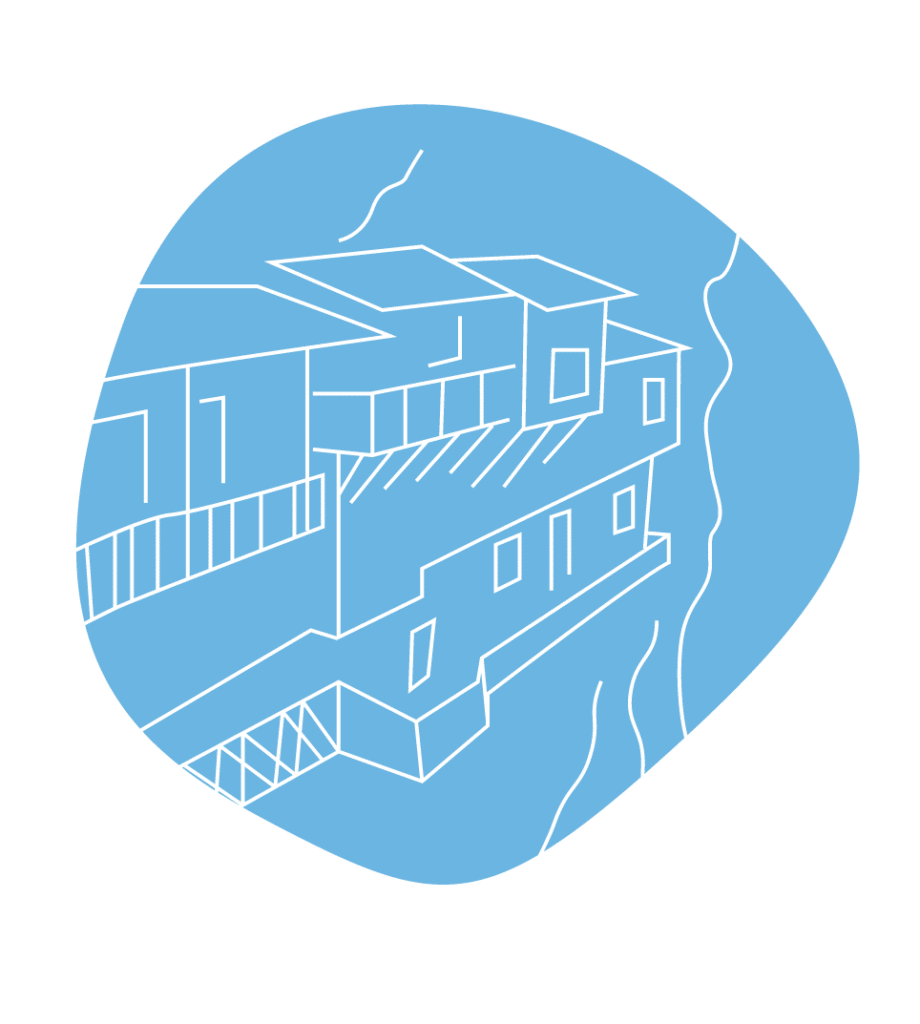The building dominates the Upper Side of the historic village of Lagkadia, from which prominent builders came, as well as the famous Deligiannis family, prefects of the Peloponnese before the Revolution. Two Prime Ministers came from the Deligiannis family in the years after the liberation.
Over the years, the village was set on fire three times by Ibrahim Pasha, who, in fact, during the siege of Lagkadia, temporarily lived in the Manor of the Deligiannis family.
The renovated mansion of the Deligiannis family in the famous Lagkadia of Gortynia is an architectural jewel of the area, built on a steep slope of Mount Mainalos, surrounded by lush vegetation.
Built on a steep slope of Mount Mainalos, amidst rich vegetation and at an altitude of 1000 meters, the beautiful village Lagkadia dominates the wild gorge formed by the tributary of Ladon in Gortynia, Arcadia.Lagkadia, almost amphitheatrically built by famous stone builders and craftsmen, is divided into the Upper and the Lower Side. The Lower Side is in a verdant ravine where the river Tuthoa flows, as Pausanias called the tributary of Ladon, while the Upper Side stands out for its picturesqueness and the unique panoramic view it offers.
In the Upper Neighbourhood, the manor of the Deligiannis family stands out, the notables of the Peloponnese with the decisive contribution both during the Revolution of 1821 and in the subsequent political history of modern Greece, with two important personalities of the family serving as Prime Ministers of the country.
Inside this historic mansion, Ioannis Deligiannis was murdered, who since 1787 held the office of Moragiannis (head of notables), since he fell out of favor with the Turkish administration, because of which the Sultan ordered his beheading. Shortly before the beginning of the Revolution, his son, Theodoros Deligiannis, also ended up in a Turkish prison after being tortured.
In Lagkadia, the revolution was declared on March 23, 1821, while on April 1, Kanellos Deligiannis ordered the killing of all the Turks who lived in the village. In total, 300 unarmed men were slaughtered. The event strongly terrified the residents of the area, who nevertheless joined the side of the Deligiannis family and supported with all their strength the struggle for the liberation of Greece.
In 1825, Ibrahim Pasha, having recaptured most of the Peloponnese, entered the empty village of Lagkadia, burned it down and set up his headquarters for a few days in the house of the Deligiannis family. It is noteworthy that Ibrahim burned the village three times, namely in 1825, 1826 and 1827, as its inhabitants contributed a lot to the struggle of independence by building impenetrable fortifications, which Theodoros Kolokotronis also mentions very often in his writings.
By the end of the Revolution, the Deligiannis family was ruined, mostly financially. Although its members occupied some positions of power, the family’s catalytic influence on political affairs ceased for a long time. They returned to the political spotlight in the last quarter of the 19th century, with two members of the family becoming Prime Ministers of the country. They were Theodoros and Nikolaos Deligiannis (or Diligiannis). The former dominated political affairs until the beginning of the 20th century, becoming one of the most important Prime Ministers in Greece and being a great rival of Charilaos Trikoupis, while the latter served as caretaker Prime Minister of the transitional government of 1895 that led the country to elections.
Today, according to the current legislation, Lagkadia has been classified as a traditional settlement, while the Manor of the Deligiannis family has been classified as a protected building due to its historical and architectural value. Inside the mansion of the notables of the Peloponnese, family heirlooms and objects of the time are kept to this day.
Διαδρομες
Ιερά Μονή Ζωοδόχου Πηγής Στεμνίτσας
Το γραφικό και ιστορικό χωριό της Δημητσάνας αποτελεί βασικό θεματοφύλακα ιστορικών και λαογραφικών παραδόσεων του ελληνικού γένους. Στη βιβλιοθήκη της, εκτός από τα εμπλουτισμένα με 35.000 τόμους βιβλίων ράφια.
Αρχοντικό των Δεληγιανναίων
Το οίκημα δεσπόζει στον Πάνω Μαχαλά του ιστορικού χωριού Λαγκάδια, το οποίο, εκτός από σημαντικούς χτίστες, χάρισε στην Ελλάδα την περίφημη οικογένεια των Δεληγιανναίων, προεστών του Μοριά πριν από την Επανάσταση. Από την οικογένεια Δεληγιάννη προήλθαν και δύο Πρωθυπουργοί στα χρόνια μετά την απελευθέρωση.
Dimitsana Historic Public Library
The picturesque and historical village of Dimitsana is a key depository of historical and folklore traditions of the Greek nation. In its library, apart from the shelves enriched with 35,000 volumes of books, the visitor can also admire important relics and memorabilia from various moments of the glorious past.























